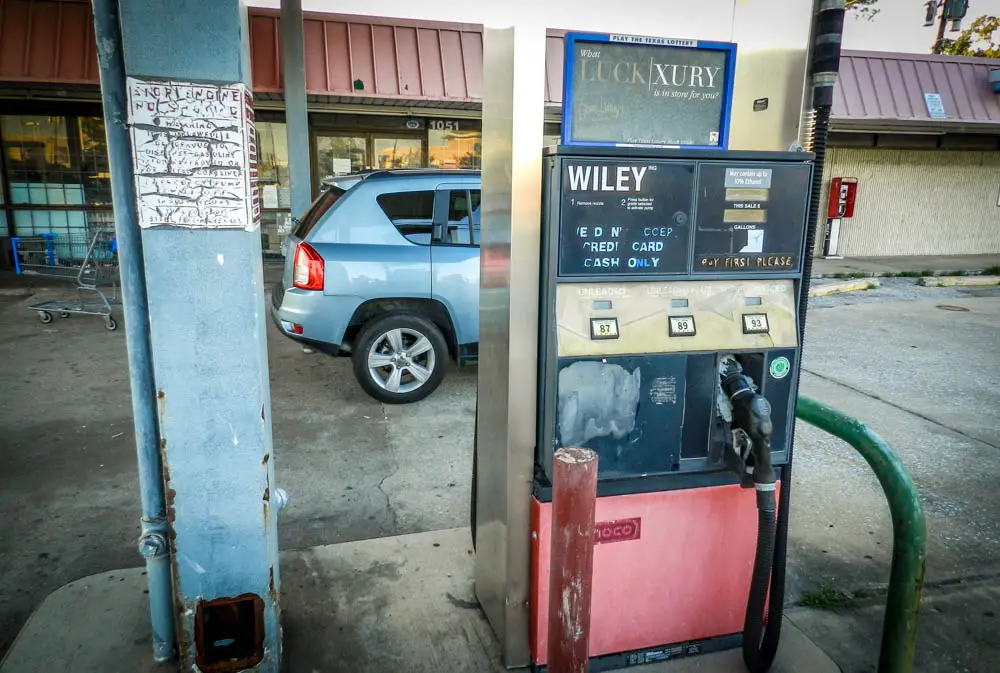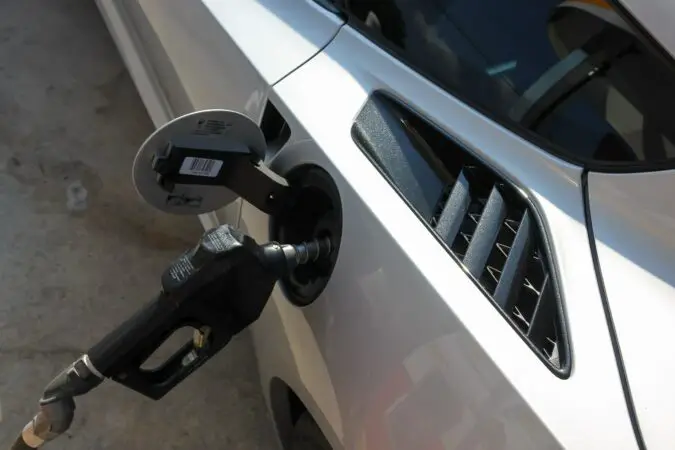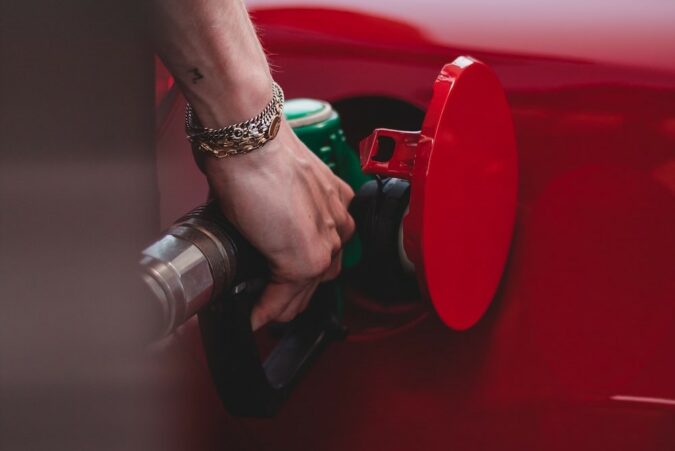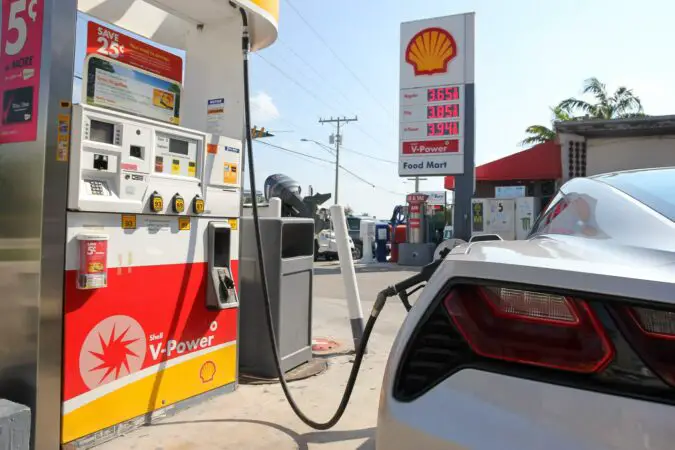Why can’t you pump your own gas in NJ? There are two states where self-service gas pumps are still prohibited, regardless of fuel price. According to state legislators, citizens of New Jersey and Oregon are not allowed self-service gas stations since doing so poses a risk to public safety. But it’s important to go over the smaller aspects.
Here’s a quick look at the laws that prevent gas stations from allowing customers to pump their own gas. In case you’ve ever wondered why the two states are anti-self-service. The self-service ban and New Jersey’s well-known cheap NJ gas prices are part of the state’s culture.
Anyone who has traveled through New Jersey knows you can keep your seatbelt on when it is time to fill the car. Gas self-pumping is prohibited. For many years, that has been the NJ gas pumping law. Lawmakers in New Jersey are now considering whether to end it. Owners of gas stations claim it will ease a labor shortage and lower prices. But several drivers and officials are dubious.
- History
- Why can’t you Pump?
- Gas Sales are Dangerous
- Pumping your Gas is illegal?
- States where you can’t Pump?
- Is there an NJ Gas Shortage?
- FAQs
- Final Verdict
The Self Service Gas Ban In NJ Dates Back To 1949
The Garden State passed the Retail Gasoline Dispensing Safety Act in 1949, which is still in force today. The New Jersey legislature had issued ten findings and declarations outlining the prohibition against self-pumping. The rationale behind self-service New Jersey gas pumping includes:
1. Fire Dangers
The legislature claims that gas station owners can ensure compliance with appropriate safety standards. Including turning off vehicle engines and refraining from smoking while fuel is supplied, it is in the public interest for them to pump fuel.
2. Assure Compliance
The legislature reiterates that the state needs a self-service gas prohibition so that gas station personnel may guarantee safety protocols are followed.
3. Helps Cashiers
According to the NJ gas pumping law, it is much more difficult to comply with safety rules when gas station cashiers are conducting in-store transactions since they cannot keep a clear view of self-service consumers.
4. Insurance Plays A Role
According to the NJ legislature, self-service gas stations have higher general liability insurance premium rates because there is a greater risk when customers leave their automobiles to get gasoline. This risk can involve contacting flammable liquids, crime, falls, or personal injury.
5. Vehicle Maintenance And Repair
According to the legislature, self-service stations contributed to the decreasing availability of repair facilities and maintenance services at diesel transfer pumps.
6. Inspections
According to the NJ gas pumping law, because comprehensive service normally comes at a higher cost, consumers are less inclined to perform or require maintenance checks (outside of New Jersey). The legislature claims that allowing gas station pump workers to perform these inspections helps customers avoid vehicle neglect, traffic hazards, and expensive problems related to delayed maintenance.
7. Gas Vapors
According to the NJ gas pumping law, gas vapors harm expectant mothers. Health risks for gas station employees are not mentioned.
8. Reduces The Price Of Full Service
According to the legislature, a nationwide self-service gas prohibition forbids full-service gas stations from imposing substantially higher charges to compete with self-service gas stations.
The legislature claims that if there were no restrictions, poor-income citizens would be forced to undergo the trouble and hazards of dispensing their own gasoline transfer pump, which may be seen as discriminatory.
9. There Is No Cost Discrepancy
According to the legislature, which asserts that the ban on self-service gas stations does not amount to a trade restraint because no clear evidence has been found that self-service gas results in a sustained decrease in NJ gas prices (more so when you’re comparing is diesel cheaper than gas).
10. Public Welfare
The legislature contends that prohibiting self-service gas stations advances public welfare because it improves safety and convenience without impairing the general well-being of the population in terms of economics.
Why Can’t You Pump Your Own Gas In NJ?
How Stuff Works claims that in 1949, New Jersey outlawed the sale of self-serve gas. Given the dangers associated with gasoline, the Retail Gasoline Dispensing Safety Act stated that the legislation was necessary for public safety.
This is Jersey, after all, and almost every other state in the Union permits its residents to fill their own gas tanks. Despite this justification, we still can’t pump NJ gas more than 70 years later. I tried to write more about why can’t you pump your own gas in NJ.
The truth is that the law was only created to control gas prices and forcibly prevent one tiny business owner from undercutting other, larger gas stations, which is exactly what you might have initially assumed.
Irving Reingold opened a 24-pump gas station on Route 17 in Hackensack, New Jersey, in 1949, claims HSW. Reingold only charged 18.9 cents for each gallon, compared to his rivals’ 21.9 cents. How was he able to offer his fuel at such a discount? Why should he pay workers to pump gas, he reasoned? The savings might be passed on to the customers who could pump it themselves. But would consumers purchase it?
His tough-guy rivals, though, weren’t fans of this innovation or his sudden success. Reingold was obviously a business-minded person. Most likely, this wasn’t his first rodeo. We are aware of this because his rivals fired a barrage of gunshots at his gas station. Reingold was able to take the blow on the chin and carry on with his new business venture because of his guts and the fact that he had already installed bulletproof glass.
Gas Sales In New Jersey Are Hazardous
His rivals wouldn’t let the shooting end that way. So they rounded up the Tommy guns and went to the police after it didn’t work. As ludicrous as it may sound, someone persuaded state legislators to forbid the selling of self-serve gas due to the Jersey Boys. This not only succeeded in forcing Reingold out of business, but it also did so swiftly.
This is not to imply that lawmakers from New Jersey haven’t made an effort to reform the bad law. In 1951, the first attempt to overturn the statute was unsuccessful. Except for Oregon and Jersey, the rest of the US had self-service gas pumps by the 1970s.
Pumping Your Own Gasoline In New Jersey Is Still Illegal
Gerald Cardinale, an assemblyman from New Jersey, proposed new legislation in 1981 to lift the state’s ban on self-serve kiosks. This endeavor likewise fell short. The Kirschner Brothers Oil Company sued the state in 1988, arguing that “the statute is archaic and that customers need to have the option between a full-service gas station and self-service.”
How Stuff Works claims that a Superior Court judge sided with the oil firm. It was swiftly overturned in the appeals court, nevertheless, using the 1951 court decision as support. If you are found pumping your own gas today in New Jersey, you will still receive a ticket. All of this craziness was caused more than 70 years ago by some guys who wanted to make a little extra cash.
States Where You Can’t Pump Your Own Gas
You simply can’t avoid some obligations, such as pumping your own gas. Why can’t you reside in a country where you actually employ people? Why must YOU pump YOUR own gas? Any sensible person would ask themselves these queries, regardless of how sluggish they are. These are the only places left in the United States.
1. New Jersey
New Jersey is famous for having gas station pump employees, earning it the moniker “mecca of full-service gas retailers.” The Retail Gasoline Dispensing Safety Act, approved by Congress in 1949, forbade retail gas customers from pumping their own NJ gas. The only state that still enforces this rule and mandates that a professional pump your car’s gasoline is New Jersey.
If you break this NJ gas pumping law, you could be subject to some costly repercussions. People who violate the 1949 law face fines ranging from $50 to $250 and up to $500 for subsequent violations.
You haven’t been busted pumping your own gas in New Jersey if you thought NJ gas prices were high. For drivers in New Jersey, there is excellent news. By completing an NJ Defensive Driving course, you can save hundreds a year on your auto insurance.
2. Huntington, New York
Huntington is exempt from the stifling grasp of accountability and is home to full-service gas merchants. The city simply favors making the least amount of effort possible. The Huntington Fire Department’s top priority during the 1980s was fire safety. It was thought that pumping your own gasoline could cause a fire. Soon after, Huntington approved a law requiring gas retailers to have full-service gas stations that applied to the entire city.
Any driver who is found filling their own car with fuel will be subject to severe fines. No matter which NY city you reside in, you can benefit from the required 3-year savings you’ll get by finishing a defensive driving course there. There are numerous opportunities to exercise your laziness, whether you reside on the west or east coast. If one of these states or cities isn’t close by, you might want to hire a personal gas station attendant.
3. Oregon
Customers in Oregon now have the option to pump their own gas due to a recent law. For the state’s overworked professionals, this is bad news. Despite these difficult times, there is a tiny light at the end of the tunnel.
Only counties with a population of under 40,000 are subject to the law. In other words, the state’s densely populated areas will continue to have their full-service gas stations. As a result, Portland will become the hub for all inconsiderate drivers on the west coast.
Why Can’t You Pump Your Own Gas In NJ – Self Service Restrictions
Since the first stations were constructed in the early 1900s, the United States has experimented with self-service gas. However, self-service didn’t take over as the standard gas station format in this nation until around 1980. In a 2000 study on the development of self-service. Ronald Johnson and Charles Romeo note that their journey to the top was not a smooth one.
Around 1915, the nation’s first self-service gas stations started to appear. They were primarily intended for use in dire situations or after dark when gas stations were closed. To run them, people would prepay with pennies.
Full-service gas stations vehemently resisted self-service. They intended to stop the development of cheaper, self-service gas because they saw it as a threat to their market share.
Profit margins on fuel sales are very thin. Gas stations could make money and establish their brands by providing a range of services like oil and battery checks, windshield cleaning, and vehicle repairs.
Full-Service Vs Self-Service Gas Stations
Filling up clients’ tanks was a crucial component of station employees’ bigger service plan to draw drivers in the early half of the 20th century, some of whom were dressed in bow ties.
Self-service gas stations played up safety risks surrounding them. Claiming that inexperienced drivers might fill their tanks to the point of overfilling and igniting a fire.
Gas stations pushed for self-service prohibitions by lobbying state legislators with the help of the local fire marshals. Self-service had been outlawed in 23 states by 1968. Self-service did not start to displace attendants in gas stations in the United States until after self-popularity services abroad and a significant change in the industry’s business model.
Gas stations had to find fresh approaches to increase profits. They switched to self-service, which decreased their expenses and raised gas sales volumes. They also diversified into higher-margin products like food, tobacco, coffee, and snacks.
Because it could produce big volumes and potential for additional profit, self-service “ended up being more popular,” according to Gary Scales, a Ph.D. candidate at Temple University doing a dissertation on the history of gas stations. Gas station owners started urging states to lift their limits on self-service. Approximately 80% of all gas stations in the country had self-service by 1992, up from 8% two decades earlier.
How To Pump Gas
Full-service gas stations are becoming harder to find. Self-service is usually quicker and can help you save some money if you fill your tank correctly (and as you figure out how to fill up gas), so it’s usually the fastest and most informed option.
- Make sure you approach the gas pump on the right side and draw up with your gas tank opening as close to the pump as you can. You’ll likely need to open the gas tank door in order to get to the gas tank. Depending on your particular model, you might need to click a button inside to release it, or you could just pry it out with your fingers to reveal the gas cap.
- Most machines require you to remove the nozzle before choosing your preferred gas and beginning pumping. The best way to accomplish this safely is to take the nozzle out and then put it back in your car’s gas port immediately, pressing it in until it fits snugly.
- Regular (87), mid-grade (89), and premium gas are the three types of gasoline that are typically available at gas stations (91-93). Depending on how the gas station is branded, these classes may go under several names, but the octane rating is largely consistent.
- Gently squeeze the pump nozzle trigger to release gasoline into your fuel tank from the pipe. You may lock the trigger on the majority of pumps to make it easy on your hand and let the gas flow constantly.
How To Get Gas
There is a triangle-shaped arrow on your car’s dashboard close to the gasoline gauge. The arrow will show the location of the car’s gas tank.
- Pull up close enough to the gas pump so the nozzle can reach your car while keeping the pump on the same side as the gas tank.
- Describe the variations between premium, mid-grade, and normal grades of gas.
- Once it’s secure, gently pull it down. Lock the nozzle into position by pulling up on the trigger. As soon as the tank is full, it will turn off automatically. When the gas pump stops, remove the nozzle slowly to prevent spills.
- It’s simple to overlook. However, gas can escape from the system if the gas cap is left off. When this occurs, many vehicles conduct a performance system self-test, which often finds the leak in the evaporative emissions system. Then, the check engine light will illuminate.
Politically Charged Issues
Self-service is still not permitted in New Jersey and a large portion of Oregon, despite repeated legislative initiatives, legal challenges, and opposition from the gas station sector. According to the law, allowing self-service would increase fire risks, present difficulties for elderly people and drivers with disabilities, and result in job losses for gas station attendants.
Oregon voters defeated a referendum to lift the ban in 1982, but more recent polling indicates that sentiments in the state remain divided. In a 2014 poll, Oregon citizens were virtually evenly divided on the issue, with 44% supporting a switch to self-service and 46% opposing the ban.
In 2018, Oregon loosened its restrictions, enabling drivers in rural counties with populations under 40,000 to self-serve. Gov. Phil Murphy stated in April that “on self-service gas, it’s been something of a political third rail in New Jersey.”
However, record gas prices and the difficulty that gas stations have hiring staff have prompted new attempts by supporters of the New Jersey gas station sector to repeal the restriction. In an effort to attract support for permitting self-service gas, 75 gas stations in the state decreased their pricing in May.
It seems unlikely that the state would soon permit motorists to use their own gas pumps. The state’s Senate president opposes a bill to lift the restriction in New Jersey. Residents of the state are not very interested in self-service. According to a survey conducted in March, 73% of them prefer to have a full-service gas station.
Is There An NJ Gas Shortage?
Although southern regions are noticing dry pumps, Gov. Phil Murphy informed the public that the recent Colonial Pipeline disruption has not yet impacted gas prices or created scarcity in New Jersey.
According to Shani Jarvis, a AAA New Jersey representative, the state’s cost of a gallon of standard gasoline has increased by a few cents since the start of the week, costing $3.04. The cost has increased by about the same amount nationwide to $3.00.
A ransomware attack over the weekend forced Colonial, which provides the gulf and Atlantic coasts with 45 percent of their fuel, to shut down its pipeline. According to the company’s website, the pipeline travels 5,500 miles from Houston, Texas, to Linden, New Jersey, and typically transports 100 million gallons of fuel per day.
Gasoline Retail History and Self-Service Bans: Need-to-Know Facts
- New Jersey and Oregon have laws banning self-service gas since 1949 and 1951, respectively, with fines of up to $500 for violators.
- Full-service gas stations with attendants were the primary gasoline retail for decades, offering a variety of services, including oil and battery checks, windshield wiping, and vehicle repairs.
- The earliest self-service gas pumps in the United States appeared around 1915, designed primarily for emergencies or after dark.
- Gas stations lobbied state legislators to pass bans on self-service by 1968, arguing that untrained drivers would overfill their tanks and start a fire.
- Self-service gas stations became popular as stations lost their hold on the auto service and repair market, and vehicle warranties began to stipulate that cars must be serviced at dealerships, eroding gas stations’ service and repair business.
- Gas stations had to look for new ways to grow profit and moved to self-service, which reduced their costs, increased volumes on gas sales, and diversified into selling food, tobacco, coffee, snacks, and other items with higher margins.
- By 1992, around 80% of all gas stations nationwide were self-service, up from just 8% two decades prior.
- New Jersey and much of Oregon still don’t permit self-service due to public safety concerns, job losses, and challenges for elderly citizens and drivers with disabilities, despite frequent legislative attempts, court challenges, and opposition from the gas station industry.
- Oregon relaxed its ban in 2018, allowing self-service for drivers in rural counties with populations under 40,000.
- A March poll found that 73% of New Jersey residents prefer having their gas pumped for them, and the state’s Senate opposes a bill that would end the self-service ban.
FAQs – Why Can’t You Pump Your Own Gas In NJ
Here are some popular FAQs:
Can You Pump Gas With The Car On
Yes. Pumping gas with the car on can be done. Should you, though? Most likely not. Leaving the engine running raises the possibility of gas vapors igniting if they come into contact with static electricity, even if there is little likelihood of a fire starting. In order to prevent a fire, static electricity, or a check engine light, it is always best to turn off your car.
Why Can’t You Pump Your Own Gas In Oregon
Two states continue to forbid self-service gas pumps, regardless of the price of fuel. Citizens of New Jersey and Oregon are not allowed to pump their own gas since doing so poses a risk to public safety. Due to the fire risks directly related to fuel dispensing, it is in the general public’s interest that gas station owners have the control necessary over that activity to ensure adherence to the necessary safety procedures, such as turning off vehicle engines and quitting smoking while fuel is being dispensed.
Why Can’t You Pump Your Own Gas In NJ
The Retail Gasoline Dispensing Safety Act, approved by Congress in 1949, forbade retail gas customers from pumping their own gas. The only state that still enforces this rule and mandates that a professional fill up your automobile with gas in New Jersey.
Is It Illegal To Pump Your Own Gas In NJ
With the passage of the Retail Gasoline Dispensing Safety Act in 1949, self-serve gas was officially outlawed in Jersey due to safety issues like fire dangers.
How Do Gas Pumps Know When To Stop
Air starts to depart the tank as gasoline fills it. When the airflow through the nozzle is stopped, the nozzle valve automatically closes due to the change in air pressure.
What Time Do Gas Stations Open
Most major highways have gas stations that are open 24 hours a day. For example, there are occasionally gas stations off the major Interstate interchanges on US and State routes. There are no restrictions other than the need for attendants to pump anyone’s gas in NJ and Oregon.
Why There Is No Gas
Due to the recession brought on by the coronavirus and the decline in gas prices to record lows, the United States’ gas production decreased last year, as it did in other regions of the world. Although fuel costs have skyrocketed due to Russia’s invasion of Ukraine, you shouldn’t panic about purchases or stockpiles.
Do Gas Stations Sell Gas Cans
The majority of gas stations either sell them or loan them out with a deposit. Never try to save a few dollars by transporting the gasoline for your vehicle in something other than a permitted container. Various substances and gasoline react differently. A significant injury or possibly a fire could result from using an unauthorized container.
What Happens If You Pump Gas With The Car On
Gasoline vapors are much more likely to come into touch with electricity or heat when the automobile is running, and you are pumping gas at the same time. If this occurs, the vapors may catch fire or explode when igniting.
Final Verdict – Why Can’t You Pump Your Own Gas In NJ
Anyone who has traveled through New Jersey knows you can keep your seatbelt on when it is time to fill the car. Gas self-pumping is prohibited. For many years, that has been the law. Lawmakers in New Jersey are now considering whether to end it.
Owners of gas stations claim it will ease a labor shortage and lower prices. But several motorists and lawmakers are dubious. More than 70 gas stations in New Jersey lowered their pricing on Friday to show how permitting self-serve gas could cut inflation.
For several reasons, The Garden State stands out from other states. This instance of uniqueness might surprise you if you don’t live in New Jersey or haven’t traveled there very often. It is forbidden to pump your own gas in New Jersey. However, you will now know how and why can’t you pump your own gas in NJ?




